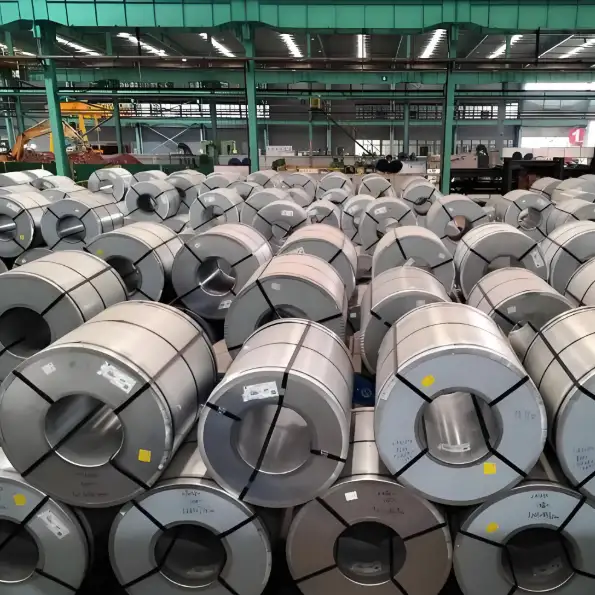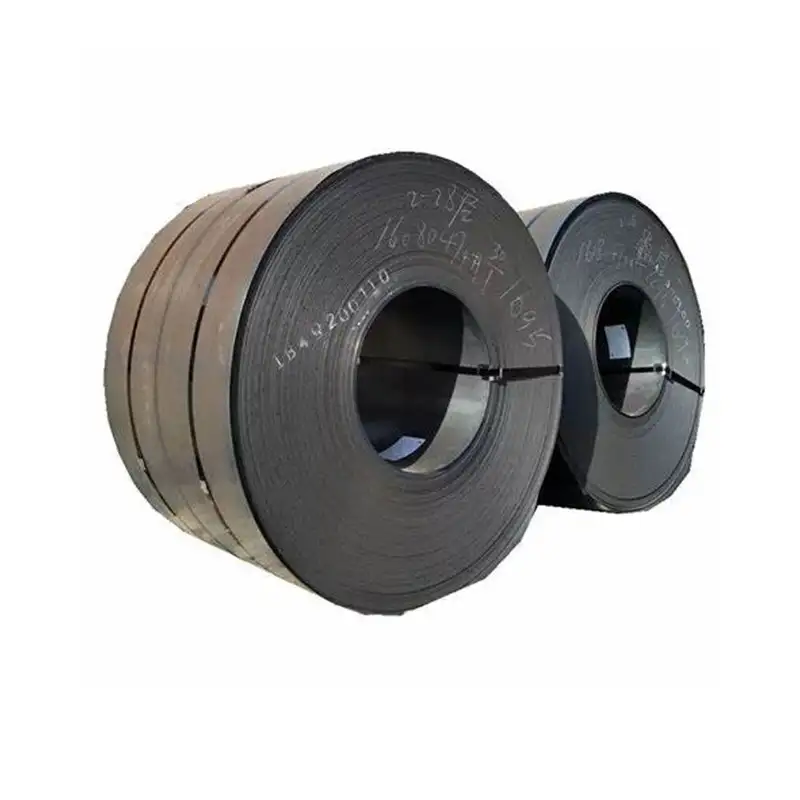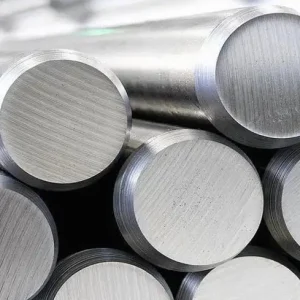AISI/SAE 1008 cold-rolled steel coil is a low-carbon, highly formable general-purpose cold-rolled sheet used widely for deep-drawing, stamping, appliance panels and light structural parts; it balances excellent ductility and weldability with economical cost. For buyers seeking factory direct supply, MWAlloys offers 100% factory pricing, regular stock in common gauges, and rapid shipment from China to global markets.
What is 1008 steel?
AISI/SAE 1008 is a plain low-carbon steel (UNS G10080) produced in cold-rolled coil form for good drawability and forming operations. Typical users choose 1008 when ease of bending, pressing and economical material cost matter more than high strength. It machines easily and welds cleanly using common fusion and resistance methods.
Chemical composition
Below is a compact table of the common chemical ranges for AISI/SAE 1008 cold-rolled material. Individual mill certificates (MTC) should always be checked for exact batch values.
| Element | Typical range (wt.%) | Notes |
|---|---|---|
| Carbon (C) | 0.06 – 0.12 (max ~0.10–0.13 in some sources) | low carbon for excellent ductility |
| Manganese (Mn) | 0.30 – 0.60 | assists strength and hardenability control |
| Phosphorus (P) | ≤ 0.04 | kept low to avoid brittleness |
| Sulfur (S) | ≤ 0.05 | machinability trace; kept minimal for formability |
| Silicon (Si) | ≤ 0.03 – 0.10 (trace) | deoxidizer; low in drawing grades |
| Copper (Cu), Cr, Mo, others | trace ppm levels | usually absent or very low in mild grades |
| Iron (Fe) | Balance (≈ 98.5–99.7%) | — |
Interpretation: Carbon near 0.08–0.10% gives the mild strength while preserving ductility required for deep drawing and stamping. Always ask suppliers for the COA/MTC and whether the coil is “drawing quality”, “deep-drawing”, or “full-hard”, since temper affects mechanical numbers.

Mechanical & physical properties
Mechanical properties vary by temper (annealed, quarter-hard, full-hard). The table below shows commonly quoted ranges for cold-rolled 1008 in annealed/cold-rolled conditions.
| Property | Typical (annealed / cold-rolled range) | Units / remarks |
|---|---|---|
| Ultimate tensile strength (UTS) | ~330 – 370 MPa (47 – 54 ksi) | depends on temper. |
| Yield strength (0.2% offset) | ~170 – 285 MPa (25 – 41 ksi) | lower in fully annealed, higher in harder tempers. |
| Elongation (A50mm / A2") | ~20 – 33% | excellent ductility for forming. |
| Hardness (Brinell) | ~90 – 110 HB | annealed at low end; cold-worked at high end. |
| Modulus of elasticity | ~190 – 210 GPa | typical for carbon steel. |
| Density | ~7.85 g/cm³ (0.284 lb/in³) | — |
Notes on variation: Mill condition, rolling reduction and any bake hardening affect numbers. For automotive bake-hardening or drawing grades, check the A1008 variant and test certificates.
Standards, specifications and ordering codes
When buying 1008 cold-rolled coil you will commonly encounter the following standards and document references. Always include the standard and the required condition/temper in purchase orders.
-
ASTM A1008 / A1008M — Cold-Rolled Carbon Sheet and Strip (common North American specification; includes chemistry, tolerances, and delivery conditions). Specify the grade (e.g., A1008 CS Type B or specific grade variant), temper (full-hard / quarter-hard / annealed) and surface finish.
-
SAE / AISI 1008 (UNS G10080) — material designation used in industry data sheets and mill certifications.
-
EN / Europe — common equivalent for cold-rolled drawing steel is DC01 / EN 10130 (standards for cold-reduced low carbon steel). If ordering into Europe, specify EN standard and tolerance class.
Specification table (order checklist)
| PO item | Example value to include |
|---|---|
| Material grade | AISI 1008 (UNS G10080) |
| Standard | ASTM A1008 / A1008M, or EN 10130 (for Europe) |
| Condition / temper | Annealed / full-bright / 1/4-hard / full-hard |
| Thickness / width | e.g., 0.35 mm – 3.00 mm; width 600–1600 mm |
| Coil ID & OD | ID 508 mm typical; OD per weight limit |
| Surface finish | Dull/bright cold-rolled; pickled if required |
| Coating | none (CRC) — specify if galvanised required |
| Mechanical reqs | Min tensile / yield / elongation, bake hardening if needed |
| Mill test cert | EN 10204 3.1 / 3.2 as required |
| Packing & marking | Export seaworthy packing, wood cradles, straps |
For automotive buyers, include bake-hardening index or forming limits when required; the ASTM A1008 text defines bake hardening measurement procedures.
Equivalent grades
Manufacturers and buyers often need equivalents when sourcing globally.
| AISI / SAE | UNS | Common EN / EU equivalent | Chinese GB / common local designation |
|---|---|---|---|
| 1008 | G10080 | DC01 (EN 10130) / 1.0330 | St14 / SPCC (nearby grades) |
Procurement tip: The chemical compositions are similar but tolerances and surface finish definitions differ between ASTM and EN systems — include the desired spec in the PO to avoid mismatches.
Manufacturing, cold-rolling & tempers
How 1008 cold-rolled coil is produced (short process): steel slabs or hot-rolled coils are pickled/cleaned then reduced in cold rolling mills to target gauge. After rolling, coils may be annealed (continuous or batch) to obtain the desired temper and relieved of stresses. Final processing includes skinpass rolling for surface finish and coil leveling. Different tempers:
-
Full-annealed / soft — maximum formability, lowest yield.
-
Quarter-hard / temper rolled — improved yield and springback control.
-
Full-hard — highest strength and hardness; used when forming not required.
Notes on mill tests & certs: Request EN 10204 type 3.1 / 3.2 or equivalent test certificates giving chemical analysis, tensile properties, and surface quality checks. Mill test reports also show coil ID/OD, net weight, and steel grade. This is the key document for quality audits.
Sizes, surface finishes & tolerances
Typical commercial offerings for cold-rolled 1008 coil:
-
Thickness: 0.25 mm – 3.00 mm common; some mills supply down to 0.14 mm or up to 4.0 mm depending on capability.
-
Widths: 600 mm – 1600 mm (cut-to-width available).
-
Coil weight: usually 2 – 12 metric tonnes depending on customer spec.
-
Inner diameter: standard 508 mm (20″) or 610 mm (24″) depending on mill.
-
Surface finish: bright cold-rolled surface (skinpassed) or dull; pickled to remove scale. For downstream painting or plating, choose pickled/bright surfaces.
Tolerances: follow ASTM A1008 or EN 10131 tolerance classes — specify thickness tolerance and edge condition. Failure to specify leads to mill default tolerance which may not suit precision stamping dies.

Typical applications & selection guidance
Common uses for 1008 cold-rolled coil:
-
Appliance panels (refrigerators, washers, dryers)
-
Consumer goods and furniture panels
-
Light automotive stampings (non-structural interior components)
-
Electrical enclosures and brackets
-
Deep-drawn components and small stamped parts
How to choose 1008 vs stronger grades: pick 1008 when deep drawing, bending radius and high elongation are priorities and part loads are modest. For higher strength needs or wear resistance, move to 1010 / 1018 or alloyed grades.
Fabrication: forming, welding, machining, finishing
Forming: Excellent for single- and multi-draw operations. Use lubricants for tight radii. For severe stretch forming choose drawing-quality coils from the mill (low carbon, low Si).
Welding: Good weldability by MIG/MAG, TIG, spot welding. Preheat is generally unnecessary for 1008. Watch for distortion in thin gauges; clamp and jigs help.
Machining: Not difficult; machinability moderate. For high-volume automated machining consider 1010/1018 if higher hardness desirable.
Surface finishing: For paint or electroplating, specify proper pickling and surface cleanliness. For powder coating, standard CRC bright surfaces perform well after degreasing.
Quality control and testing
Ask suppliers for (and inspect) the following before acceptance:
-
Mill Test Certificate (EN 10204 3.1 / 3.2) with chemical and mechanical results.
-
Surface inspection report (scratches, pitting, rust).
-
Dimensional report (thickness distribution, width, coil weight).
-
NDT if required (eddy current testing for surface subsurface defects).
-
Packaging & preservation details for long shipments.
Supply & logistics — MWAlloys offering
MWAlloys (brand / MW Alloys) is a Chinese manufacturer and global supplier of cold-rolled carbon steel coils including AISI/SAE 1008. Key selling points MWAlloys provides:
-
Factory-direct pricing (100% factory price) — removal of trading margins for competitive quotes.
-
Stock availability — standard gauges and widths kept in the warehouse for fast pickup and shipment.
-
Rapid lead time — typical ex-factory time for stocked items is short; for mill orders, lead times are competitive.
-
Quality assurance — full Mill Test Certificates (EN 10204 3.1/3.2), visual surface inspection, and packaging suitable for sea/air export.
-
Customization — cut-to-length slitting, coil ID/OD specs, and specific tempering on request.
(When you request a quote, supply: thickness, width, temper, quantity (tons), delivery port, required certificates.)
Price comparison — USA / Europe / China (2025)
Market prices fluctuate by region, time and product form (spot vs contract). The table below summarizes industry reported averages for cold-rolled coil (CRC) in mid-2025; use these figures as market indicators rather than firm quotes. Always request live quotes from mills/suppliers.
| Region | Representative mid-2025 price (USD / metric tonne) | Source / notes |
|---|---|---|
| China (domestic / export indicator) | ~$500 – $580 / t (China CRC ~ $516 / t in Q2 2025) | market trackers and MEPS show China CRC around $450–580/t in early-to-mid 2025. |
| Europe (Germany / NW Europe) | ~$800 – $900 / t (Germany ~ $841/t June 2025) | IMARC & regional indexes cite Germany ~ $841/MT in Q2 2025. |
| United States (domestic CRC) | ~$1,050 – $1,250 / t (US spot CRC in Q2 2025 often reported around $1,070–1,250/t) | US spot CRC reported 1,057–1,270 USD/MT in Q2 2025 across industry trackers. |
How to interpret:
-
US domestic CRC prices are usually higher due to domestic mill pricing, freight and anti-dumping/tariff measures.
-
China export price competitiveness depends on shipping, duties, and billet costs.
-
For project budgeting, include freight (FOB vs CIF), customs duties, inland logistics and handling.
Note: These are market aggregates (CRC product), not firm quotes for mill-certified AISI 1008 coils. For exact pricing for MWAlloys factory-direct offers, request quantity and specs for a tailored Proforma Invoice. Additional price signals from marketplaces (Alibaba) show transactional ranges for coils with MOQ and quality variations.
Frequently Asked Questions
Q: What is the main difference between AISI 1008 and 1010?
A: 1008 has slightly lower carbon (commonly ~0.06–0.12%) than 1010 (~0.08–0.20%), giving 1008 better formability and elongation; 1010 gives higher strength moderately. Choose 1008 for deep drawing; 1010 if a bit more strength is needed.
Q: Can AISI 1008 cold-rolled coil be galvanized afterwards?
A: Yes. after appropriate surface cleaning/pickling and depending on coating process. For pre-galvanized requirements, many buyers opt for HDG or GALV lines instead of CRC to avoid post-galvanizing complexity.
Q: Is AISI 1008 suitable for spot welding and resistance welding?
A: Yes. Low carbon content and low alloy content make it well suited to common resistance and spot welding methods used in appliances and automotive interiors.
Q: What tolerances should I expect on thickness and width?
A: Tolerances depend on the chosen standard (ASTM A1008 / EN 10130 classes). Typical mill tolerances for CRC thickness might be ±0.03–0.10 mm depending on gauge and tolerance class. Always specify tolerance class in the PO.
Q: How are coils priced (what affects price most)?
A: Primary drivers are steel feedstock (hot-rolled coil and slab) costs, regional supply/demand, energy costs, freight and tariffs. Alloy content is low so composition rarely drives price; thickness, temper and surface requirements do. Market trackers show regional spreads discussed earlier.
Q: What certification should I ask for?
A: EN 10204 type 3.1 or 3.2 mill test certificates with chemical and mechanical results; add any specific buyer audit or batch traceability requirements.
Q: How to avoid surface defects for painting parts?
A: Specify pickled, bright cold-rolled finish, request visual surface acceptance criteria, and consider pre-treatment at your painting plant. Perform incoming inspection for scratches, slivers, and mill scale.
Q: Lead time expectations from China (MWAlloys)?
A: For stocked sizes: typically short (days to 2 weeks). For mill orders/slit coils: common lead times 2–6 weeks depending on mill schedule and shipping. Always confirm at RFQ. (MWAlloys provides fast stock delivery and full factory pricing per request.)
Q: Are cold-rolled 1008 coils heat-treatable to higher strength?
A: Low-carbon steels like 1008 cannot be significantly strengthened by conventional quench & temper; work hardening (cold work) or moving to higher-carbon / alloy grades is needed to raise strength.
Q: Can we get custom slitting or cut-to-length from MWAlloys?
A: Yes. MWAlloys offers slitting, cut-to-length and edge conditioning as value-added services. Specify nominal lengths, edge type (sheared/trimmed), and surface protection for shipping.
Authoritative references
- ASTM A1008 / A1008M — Standard Specification for Steel, Sheet, Cold-Rolled, Carbon (ASTM International)
- MatWeb — Material property data for AISI/SAE 1008 (technical datasheets)
- SAE International — material designations and references for SAE/AISI grades
- EN / ISO standards portals — for equivalence and European acceptance (search EN 10130 / cold-reduced steel)





